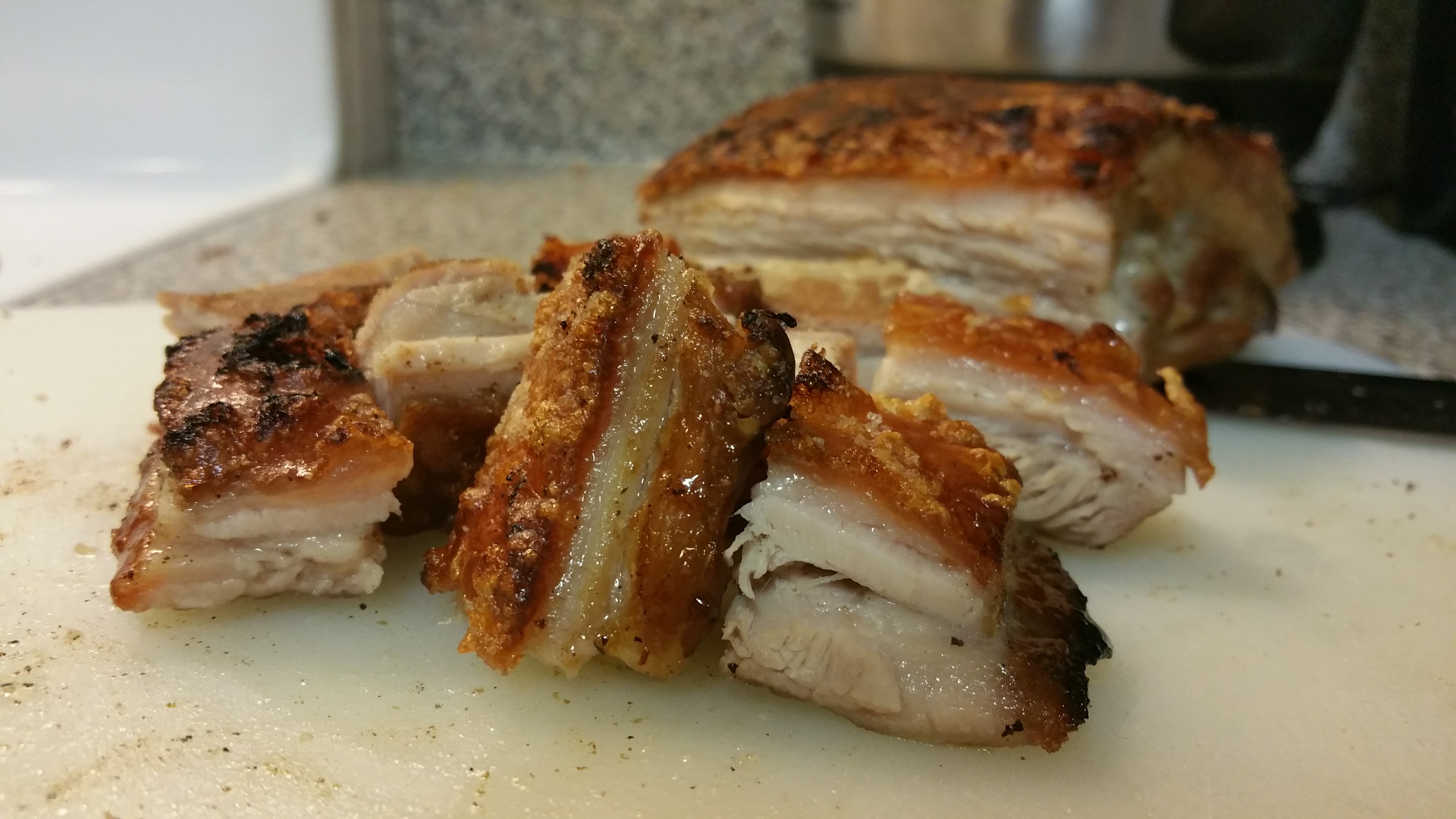I’m not a fan of frying to be honest. I don’t like the oil splatter, the burns, the mess. Lechon Kawali, or commonly known as crispy pork belly, is usually deep fried. This recipe is a result of my disdain for frying because sometimes I just really have a craving for some delicious, fatty pork belly. The advantages of using and oven instead of deep frying are twofold: it’s less greasy, and it’s less mess. As an added benefit, since this recipe requires boiling the belly, you also end up with a nice pot of pork broth that you can use for soups.
Warning: despite being finished in the oven, it’s still really fatty and unhealthy. I don’t recommend eating this more than once a month.
This dish is best served hot with some vinegar or some Mang Tomas. I also like to eat this dish with fresh garlic fried rice.
This recipe has taken me multiple tries to get right and I hope you will enjoy it just as much as I enjoyed figuring it out.
Baked Lechon Kawali

Succuluent crispy pork belly without the need for frying.
Ingredients
- 1.5 lb. (0.6 kg.) Pork Belly
- Salt
- Peppercorns
- Water
- 5 cloves garlic
- 2 oz. ginger root
- 2 medium yellow onions
Directions
- Rinse pork belly under running water then place it in a large pot. Cut belly into 2 pieces if necessary.
- Peel and quarter the onions and put them into the pot
- Peel the garlic cloves then smash each clove and put them into the pot
- Cut the ginger root into slices or into smashed chunks then put them into the the pot
- Fill the pot with enough water to cover all the ingredients
- Add salt and pepper. Generally more is better in this case.
- Cover the pot and bring to a boil.
- When it comes to a boil, use a spoon or a skimmer to skim off the layer of foam that will rise to the top.
- Reduce heat to low and leave it for an hour. Add water if the water level get low.
- Remove from heat, then gently remove the pork belly from the pot with a pair of tongs and place it on a cooling rack. Leave on the counter uncovered for about 4-5 hours to air dry. Use this time to strain the pot of pork broth into containers for later use.
- After 4-5 hours, preheat your oven using the broil setting. If your oven has multiple broil settings, using the Hi setting. If your oven does not have a broil setting, set it as high as it will go. 500°F (260°C) is ideal.
- While your oven is heating, take a knife or other sharp object and poke the skin of the belly many times in various places. More pokes means more puffiness. Then take a paper towel and remove any moisture still on the outside of the belly. Sprinkle a generous amount of salt onto the skin of the belly and spread evenly.
- When the oven is ready, place the belly onto a baking rack and a baking dish underneath the rack. Broil for about 10-15 minutes. You should hear popping and crackling coming from the belly as it broils. Keep an eye on the dish and remove if it gets too charred. Optional Flip the belly and broil for an additional 5 minutes.
- Remove the belly from the oven and let the meat rest for 15 minutes.
- Using a knife, scrape off excess char from the skin. Then cut into slices first, then smaller pieces. Serve immediately.